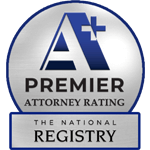The decision to seek personal bankruptcy protection is no doubt one that people in Oregon anguish over. Yet after committing to this course of action, an equally important decision awaits: what chapter to file under?
Statistics show that one particular form of personal bankruptcy is the most popular: Chapter 7. Indeed, according to the American Bankruptcy Institute, over 76% of non-business bankruptcy filings in the second quarter of 2020 were Chapter 7 cases. The reason for Chapter 7’s popularity is clear: with it, one can have certain debts discharged. However, this is a benefit one must qualify for through the Chapter 7 means test.
What is a means test?
A means test measures the extent of one’s actual financial means. In the context of a bankruptcy case, courts apply the means test to determine if one does or does not have the means to settle their debts. According to the website for the Administrative Office for the U.S. Courts, the first step in the Chapter 7 means test is to compare one’s income to their particular demographic for their respective state. If it comes in less than the median amount for their demographic, then they automatically qualify to file for Chapter 7. If not, then they move on to the second step of the means tests.
What if one fails the means test?
This step involves projecting one’s aggregate monthly income out over five years. If that amount is more than either $12,850 or 25% of their non-priority unsecured debt (provided that amount is more than $7,700), then the filer fails the Chapter 7 means test. This does not necessarily exclude them from filing for bankruptcy, however. Rather, the court may simply convert their application over into a Chapter 13 case.



